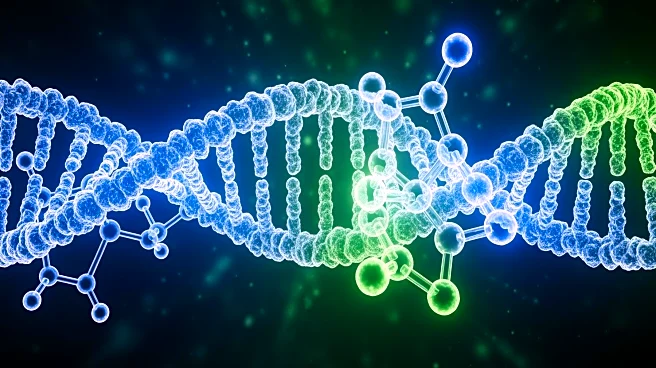What's Happening?
The hereditary angioedema (HAE) market is anticipated to grow significantly, reaching USD 5.96 billion by 2032, according to Coherent Market Insights. This growth is attributed to a compound annual growth rate
(CAGR) of 9.6% from 2025 to 2032. The market expansion is primarily driven by heightened awareness of the disorder and the introduction of advanced treatment options. Improved diagnostic tools have facilitated earlier and more accurate detection of HAE, leading to an expanding patient base and increased demand for effective therapies. The market is expected to be dominated by hereditary angioedema type I, which is projected to capture a revenue share of 67.8% in 2025. C1 esterase inhibitors are anticipated to remain the most popular drug class, accounting for 30.1% of the market share in 2025. North America is expected to lead the global market with an estimated share of 36.3% in 2025, while the Asia Pacific region is poised to emerge as a lucrative market for HAE companies.
Why It's Important?
The projected growth of the hereditary angioedema market is significant for several reasons. Increased awareness and improved diagnostic capabilities are likely to lead to more timely and accurate diagnoses, which can improve patient outcomes and expand the market for HAE therapies. The development of novel treatments, such as biologics and monoclonal antibodies, offers new opportunities for managing HAE, potentially reducing the frequency and severity of attacks. However, the high cost of treatments and delayed diagnosis in some regions may limit market growth. The introduction of more patient-friendly administration routes, such as oral therapies and subcutaneous injections, is expected to enhance patient adherence and convenience, further driving market expansion. Regulatory support, including accelerated approval pathways for rare diseases, is also facilitating the faster introduction of new treatments, reducing development costs and time-to-market.
What's Next?
The hereditary angioedema market is likely to see continued innovation and development of new therapies, with a focus on prophylactic treatments to reduce the frequency and severity of HAE attacks. Regulatory agencies, such as the FDA, are expected to continue supporting the industry by approving new treatments quickly, allowing effective therapies to reach patients faster. The market may also experience disruption from breakthrough gene therapy and CRISPR technologies, which have the potential to offer curative treatments. Additionally, the adoption of AI-powered diagnostic tools for rare disease detection could improve patient identification rates, expanding the addressable market size for hereditary angioedema.
Beyond the Headlines
The hereditary angioedema market's growth highlights broader trends in healthcare, such as the increasing importance of personalized medicine and the role of advanced diagnostics in managing rare diseases. The shift towards more convenient and patient-friendly treatment options reflects a growing emphasis on patient-centered care. Furthermore, the market's expansion underscores the need for continued investment in research and development to address the challenges of high treatment costs and delayed diagnosis. As the market evolves, ethical considerations related to access to expensive therapies and the equitable distribution of new treatments will likely become more prominent.











